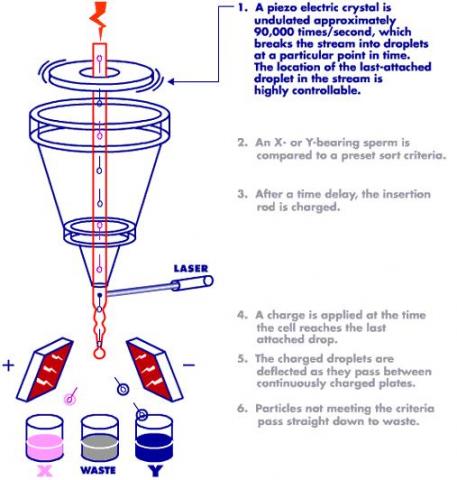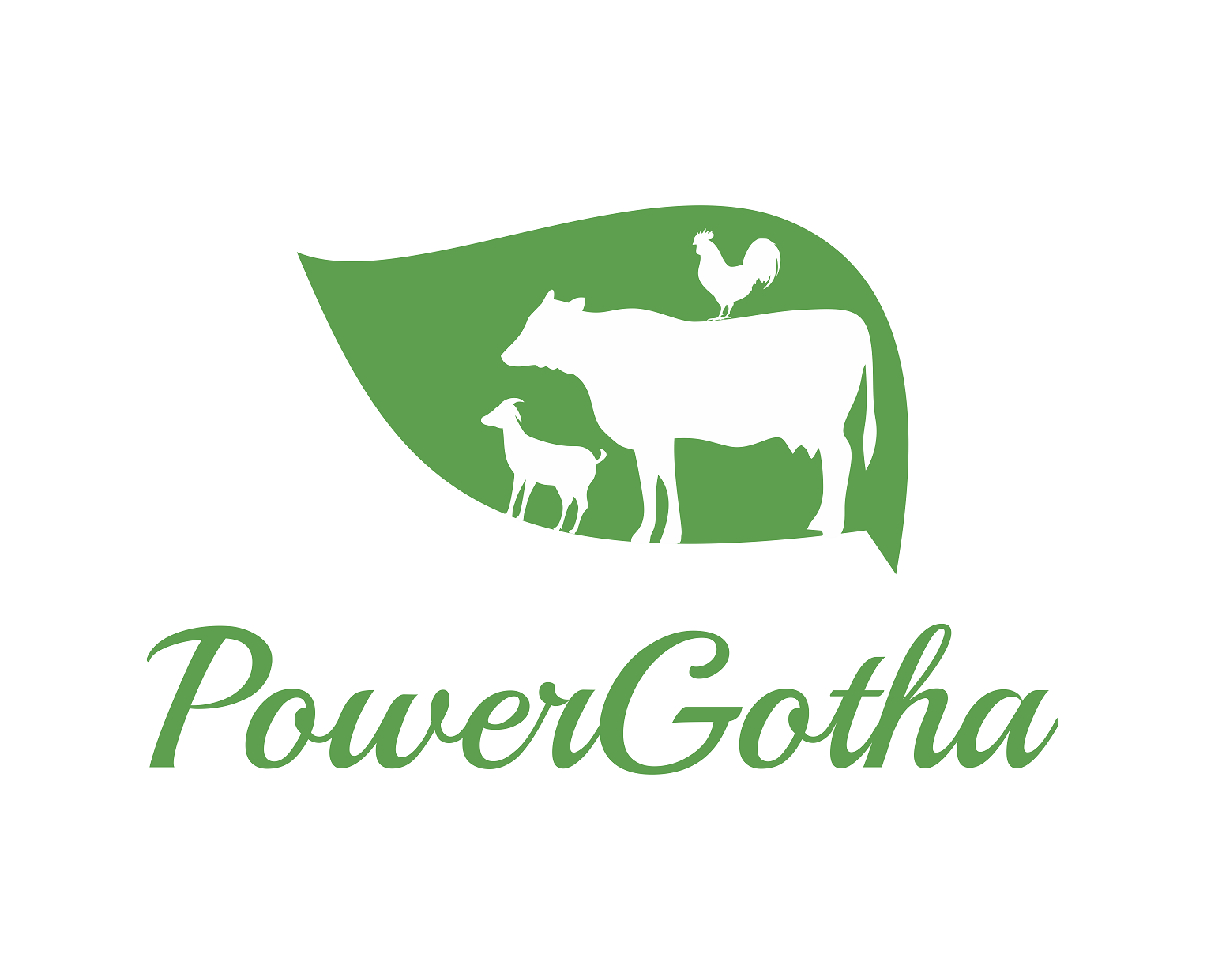Importance of Sexed Semen for Dairy Farming in India
Introduction to Sexed Semen
The concept of Sexed Semen for Dairy Farming is quite a new one, all though it has gained massive popularity within a span of few years.
With the help of sexed semen, it is possible to produce off springs of desired sex, both male and female, by inseminating the semen having X or Y chromosome sperms.
In other words, it can be said that it is a technology that sorts the X and Y bearing chromosomes under the gender selection of embryos to produce a progeny of the desired sex. The success rate of this technology is about 80-90%.
Sex sorting was first of all done by the researchers of United States Department of Agriculture i.e. USDA in Livermore, California, and Beltsville, Maryland. The technology was later on patented as “Beltsville Sperm sexing technology” and its commercial use started in United States in 2001 with a license granted to Sexing Technologies (ST), Texas. Source
Use of Sexed Semen in India
India being the largest producers of milk in the world can benefit immensely from this technology.
As per the 19th Livestock census-2012, the crossbred milch cattle increased from 14.4 million to 19.42 million, i.e. an increase of around 34.78% from the last year.
The recent Livestock census-2019 i.e. the 20th states that the total livestock in India has seen an increase of 4.6% over the livestock census 2012 making the total population of livestock to be 535.78 million.
Total number of cattle has shown an increase of 0.8% over the last year taking the total to 192.49 million. Out of the given number of cattle, 145.12 million is the population of female cows, which is 18% higher than over the previous census.

It is predicted that with the growing population and accelerated economic growth, the demand for milk and milk products is bound to achieve new heights. In such a booming economy, it is highly recommended for the dairy farmers to take advantage of the situation and use this new technology to fulfill the demand for the mutual benefits of producers and the consumers.
For a profitable Dairy Farming milk business , high importance is placed on proper breeding management. For going from 5 cows to 25 cows, it is essential that maximum number of cows calve every year and there are more female cows produced. This is helped by use of Sexed semen.
The use of sexed semen for the purpose of reproduction not only helps in bearing off springs of the desired kind but also helps in improving the inherited traits in the progeny. Dairy farmers benefit more by growing the farm internally. As such the demand for sexed semen is likely to increase in the near future.
As per The Indian Express dated 17th Dec, 2019
“During the recently held 14th Progressive Dairy Farmers Association (PDFA) International Dairy and Agri Expo 2019 at Jagraon, Union Minister for animal husbandry, dairying and fisheries Giriraj Singh had said that the plan is to provide dairy farmers with ‘sexed semen’ for cattle for as cheap as Rs 100 per straw by 2020.”
How Does Sexed Semen work for Dairy Farming
As per Dr Prakash Singh Brar, dean, College of Veterinary Sciences, Guru Angad Dev Veterinary and Animal Sciences University (GADVASU),
“The reproduction system of cattle is similar to humans. Cows carry XX chromosomes while bull semen carries both X and Y. If the egg fertilises with an ‘X’ chromosome, a female calf is born and if with ‘Y’, a male is born. There are two techniques to produce sexed semen: One is the ‘sorting process’ in which ‘X’ and ‘Y’ chromosomes are separated. ‘X’ are retained and ‘Y’ discarded. The other is in which ‘Y’ chromosomes are altogether killed.
Both technologies are pioneered by the United States-based companies and use an instrument called ‘Flow Cytometer’. Cows are impregnated using sexed semen through the artificial insemination process with consumption of one straw per cow.”
Flow Cytometer for Sexed Semen for Dairy Farming

Photo source: Sexing Technologies, USA and Dairy Knowledge Portal, NDDB
Availability of Sexed Semen for Dairy Farming
India used to import sexed semen from foreign countries for a hefty amount of money. Other advanced countries like USA, New Zealand, Denmark and Australia have been using this technology for quite some time now.
In India, Brahma Genetics Facility claims to be the first company to have bovine semen sexing lab. This lab is located at Brahma, near Pune, Maharashtra. The technology used for this purpose is known as Genus IntelliGenTM technology.
With the help of this technology, India is now able to produce its own sexed semen for Holstein, Jersey, Sahiwal, Gir, Red Sindhi, Crossbreeds and Murrah and Mehsana buffaloes for the first time in India under the brand SEXCELTM.
The dairy farmers interested the use of this new technology to boost their business may visit the website of Brahma Genetics here for more information.
This technology is very beneficial for the dairy farmers who do not want to maintain any bulls in the farms. The farmers may visit the nearest government veterinary dispensary for more details and the process of acquiring and insemination of sexed semen.
At present, the approximate cost of high quality conventional semen straws is around Rs 20-40 per straw only whereas sexed semen costs at least Rs 1,200 per straw without subsidy. However, with time and the government showing interest in the use of this technology, the prices are expected to come down and become very affordable even for a small dairy farmer to benefit from it.
Benefits of using Sexed Semen for Dairy Farming
This new technology has many benefits, namely:
- This technology can help in producing female cows, heifers from genetically superior cows for Dairy Farming in India.
- It can help the dairy farmers to maintain an elite fleet of bulls with superior genes for the purpose of further reproduction.
- With the help of sexed semen the dairy farmers can increase the herd internally and at a faster rate. Further, this technology helps in minimizing the number of unwanted male dairy calves.
- The technology is known to work better for heifers. The male dairy calves increase the risk of dystocia compared with heifer calves. With the help of this technology the cases with dystocia can be reduced.
- The tendency of leaving and abandoning the excess male off-springs or the cows which may no longer be used to produce milk is high amongst the dairy farmers of the country. This leads to vast number of strays. With the help of sexed semen technology, the population of male off springs may be controlled and thus reduce the number of strays in the country.
How Safe is it to use Sexed Semen in cows?
According to DairyKnowledge portal , it is safe to use sexed semen for artificial insemination. However, as sperm concentration in sexed semen straw is far less than the conventional semen straw and the sorting procedure itself damages the sexed sperm, it is reported that the conception rate is 10 to 15 % less with sexed semen as compared to conventional semen.
Limitations of using Sexed Semen in Dairy Farming
Technological limitations: This apply only to labs
· High cost of sex sorting machine
· Low sorting efficiency and speed
· Require highly skilled person to operate sex sorting machines
· Damage to the sperm due to shear force, electrostatic charge, droplet formation and sudden stop.
· Waste of approximately 50% of sperm
· Reduced freezing potential of the sorted sperm
Implementation limitations
High cost of the product which include the cost of the intellectual property right (Rs. 1500-4500/- for imported dose as compared to Rs. 15-20/- dose for conventional semen)
The conception rate with sex sorted semen is 10-15% less than the conventional semen. This factor will be more critical in Indian condition considering low artificial insemination coverage (20-25%) and low conception rate with artificial insemination (25-35%).
There is no standard operating procedure to perform insemination with sexed semen. This is another area of concern as the sperm concentration of sexed semen ranges between 2 and 4 million/dose whereas it is 20 million/dose in conventional semen. Managing lower sperm concentration will be a challenge in the field under Indian condition.
For more detailed information, visit the sexed semen page of Dairy Knowledge portal here.
